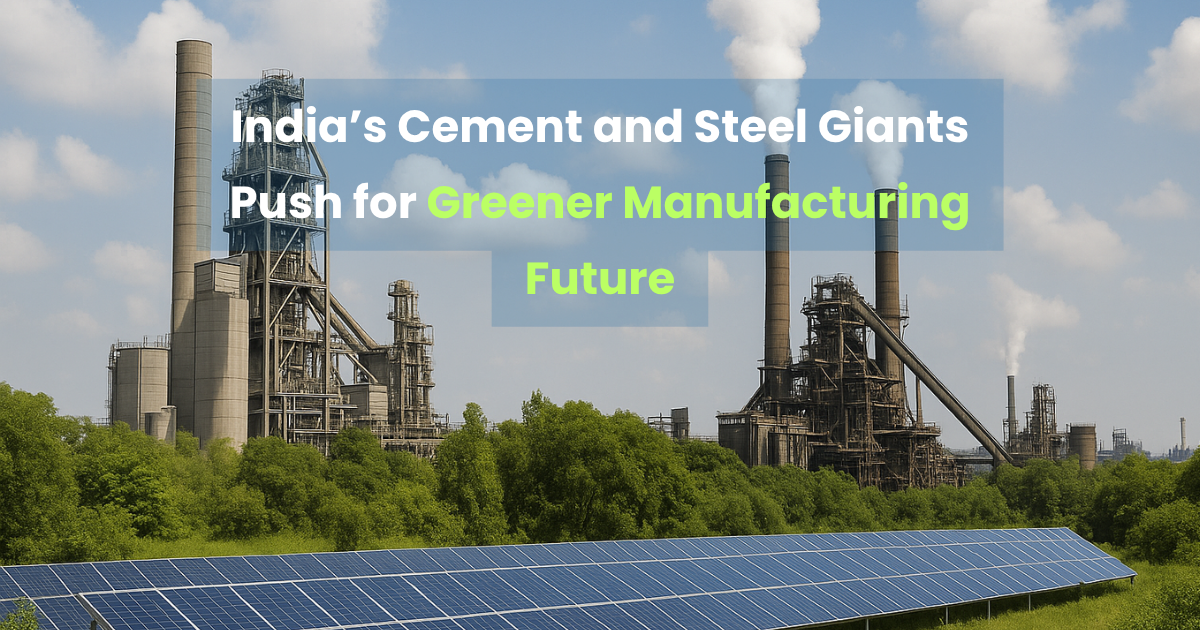India–US Trade Tensions Rise Over Steel and Auto Tariffs NMDC Limited reports a 38% drop in Q4 FY24 consolidated net profit RINL to Raise $23 Million Through Land Sales Amid Crisis

As India advances toward its 2047 development vision, the cement and steel industries—core to infrastructure—are accelerating their shift toward sustainable manufacturing.
Both sectors are cutting coal dependence by adopting energy-efficient systems, ramping up renewable energy use, and modernizing logistics. Companies are exploring cleaner transport alternatives, including LNG trucks and inland waterways, to reduce emissions.
Steelmakers are embracing scrap-based production and experimenting with green hydrogen to cut emissions. New initiatives include certifying low-carbon steel to meet global standards and building green hydrogen plants to power furnaces and processes.
Cement manufacturers are integrating renewable energy sources across their operations and investing in low-emission transport solutions. These shifts are helping reduce the carbon footprint of one of the world’s most emission-intensive materials.
Green steel and cement come at a higher cost—sometimes up to 30% more—but rising demand and increasing environmental awareness are driving adoption. Certification systems and sustainability goals are pushing the industry to absorb these premiums in favor of long-term value.
India’s cement and steel producers are taking bold steps toward decarbonization, turning climate goals into actionable strategies through technology, innovation, and sustainability-driven leadership.
Also Read : Govt issues guidelines for pilot projects on use of green hydrogen in transport sector Coal recorded 10.2% growth among eight key infra sectors in May